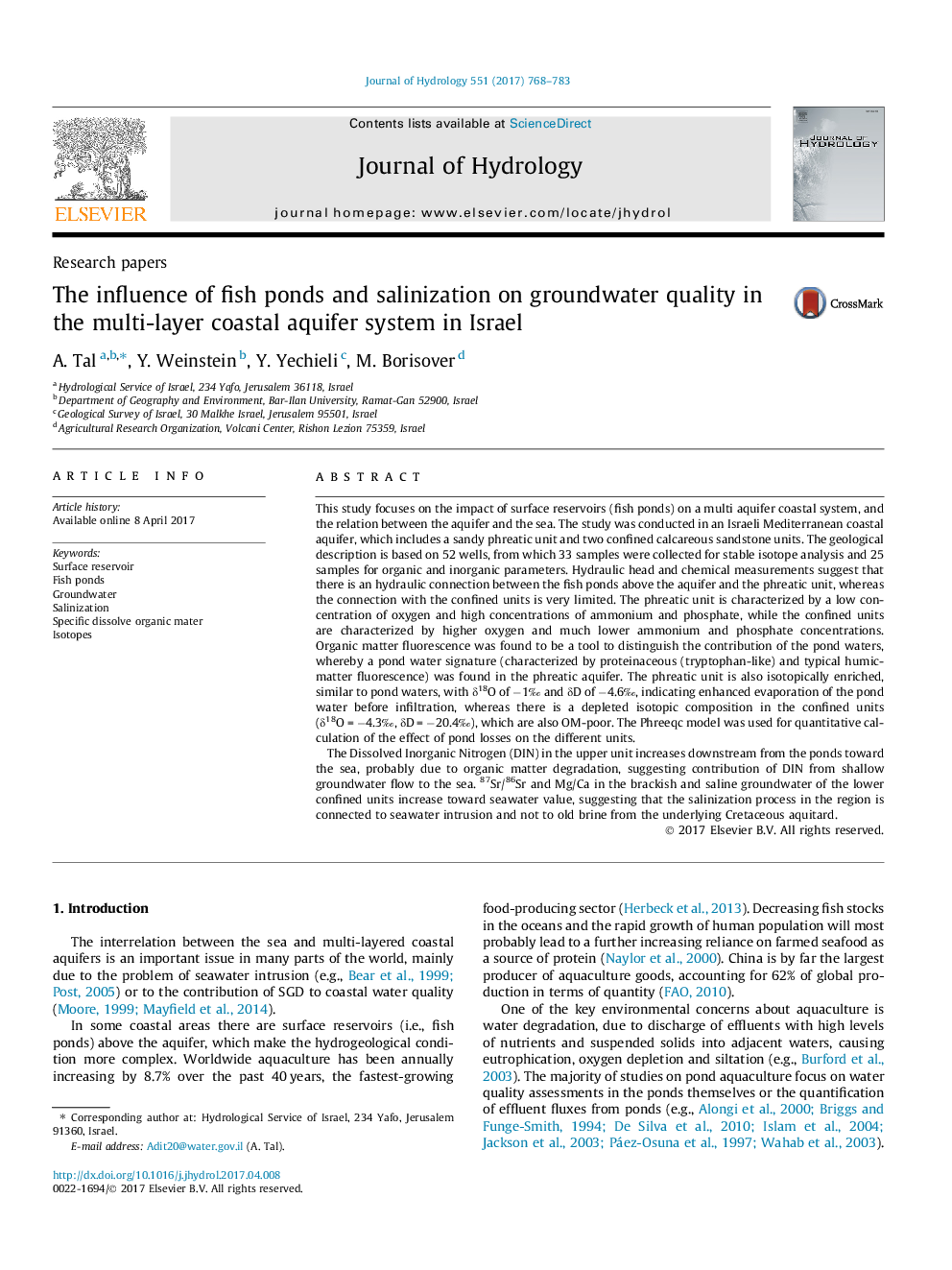| کد مقاله | کد نشریه | سال انتشار | مقاله انگلیسی | نسخه تمام متن |
|---|---|---|---|---|
| 5770876 | 1629903 | 2017 | 16 صفحه PDF | دانلود رایگان |
- Estimation of Surface reservoir (fish ponds) contribution by stable isotopes.
- Tracing fish ponds' source in groundwater by signature of nutrients and OM fluorescence.
- Sr isotopes and Mg/Ca ratio as tracers for salinization source.
- The effectiveness of a relatively thin clay layers for hydrological separation.
This study focuses on the impact of surface reservoirs (fish ponds) on a multi aquifer coastal system, and the relation between the aquifer and the sea. The study was conducted in an Israeli Mediterranean coastal aquifer, which includes a sandy phreatic unit and two confined calcareous sandstone units. The geological description is based on 52 wells, from which 33 samples were collected for stable isotope analysis and 25 samples for organic and inorganic parameters. Hydraulic head and chemical measurements suggest that there is an hydraulic connection between the fish ponds above the aquifer and the phreatic unit, whereas the connection with the confined units is very limited. The phreatic unit is characterized by a low concentration of oxygen and high concentrations of ammonium and phosphate, while the confined units are characterized by higher oxygen and much lower ammonium and phosphate concentrations. Organic matter fluorescence was found to be a tool to distinguish the contribution of the pond waters, whereby a pond water signature (characterized by proteinaceous (tryptophan-like) and typical humic-matter fluorescence) was found in the phreatic aquifer. The phreatic unit is also isotopically enriched, similar to pond waters, with δ18O of â1â° and δD of â4.6â°, indicating enhanced evaporation of the pond water before infiltration, whereas there is a depleted isotopic composition in the confined units (δ18O = â4.3â°, δD = â20.4â°), which are also OM-poor. The Phreeqc model was used for quantitative calculation of the effect of pond losses on the different units.The Dissolved Inorganic Nitrogen (DIN) in the upper unit increases downstream from the ponds toward the sea, probably due to organic matter degradation, suggesting contribution of DIN from shallow groundwater flow to the sea. 87Sr/86Sr and Mg/Ca in the brackish and saline groundwater of the lower confined units increase toward seawater value, suggesting that the salinization process in the region is connected to seawater intrusion and not to old brine from the underlying Cretaceous aquitard.
Journal: Journal of Hydrology - Volume 551, August 2017, Pages 768-783
